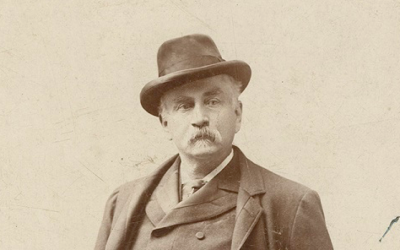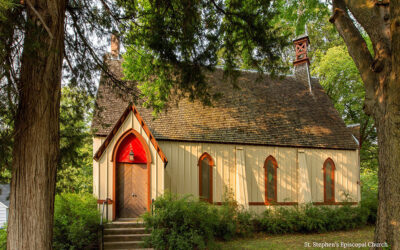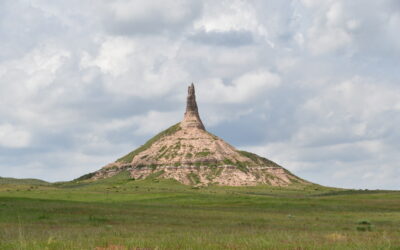“In 1872 we held our first Fourth of July celebration. Everybody was eager to help and
preparations went forward swiftly. The magnificent natural park with School Creek
meandering through it was an ideal place to have such a gathering. Benches were made, tables
erected, and what we were most proud of, a speaker’s stand finished. But when it came to the
flag pole, cut from a young ash, we were utterly dismayed to discover that there was not a flag
in town. Before you look superior, tell me how many of you brought with you a flag when you
moved to Nebraska.
“The committee called for somebody to make a flag and I, not knowing better said I would.
They sent me several yards of white muslin and red and blue oiled calico. Sewing the stripes
together was easy, but when it came to the five pointed star, I ardently wished that General
Washington had insisted upon the one with six points, for what Betsey Ross accomplished with
one clip of her scissors, I could not do with dozens of snips. I cut and cut and only succeeded in
making pieces that looked like crooked legged animals. My husband, strong on geometry, came
to my rescue with angles and triangles, and finally we evolved a five pointed star fully as good
as the average kindergarten child can make to-day. It was tiresome sewing them on with tiny
stitches that must show and long before it was finished I began to consider there were more than
enough states in the Union, especially when I discovered there was another side and it must all
be repeated. The night it was really completed I was standing waving it joyously when Mrs.
I.N. Clark came hurrying in to tell me she had been asked to substitute for A.C. Burlingame
who had been appointed to read the Declaration of Independence and she wanted to know if I
had anything to clean her white kid gloves which had not been used since her wedding and were
yellowed. We rubbed those gloves with bread crumbs, with cornmeal, covered them with corn
starch, and finally decided they would do.
We had a local speaker in the person of R. G. Brown, and a man from Virginia named Flick, a
member of their legislature. I know we were proud to have him come to Sutton. My father,
H.W. Gray, was president of the day and I can see him now as he stood in his blue uniform of a
Civil War Captain. Sad to tell, it rained all day the third and on the morning of the Fourth we
backed the largest lumber wagon in town to a knoll near the park and went through every
number of our program without a break. When our picnic dinner was finished, on the damp
ground, we voted the day a perfect success.”
My Own Biography, Mrs. Ada Gray Bemas, NH, VOl xiv, No. 4, oct/dec. 1933.



